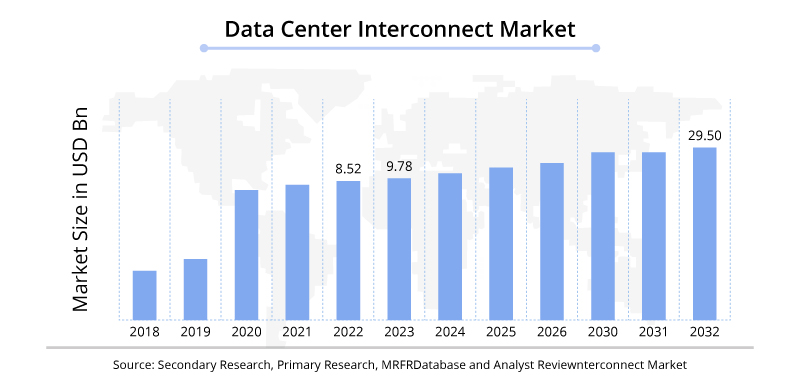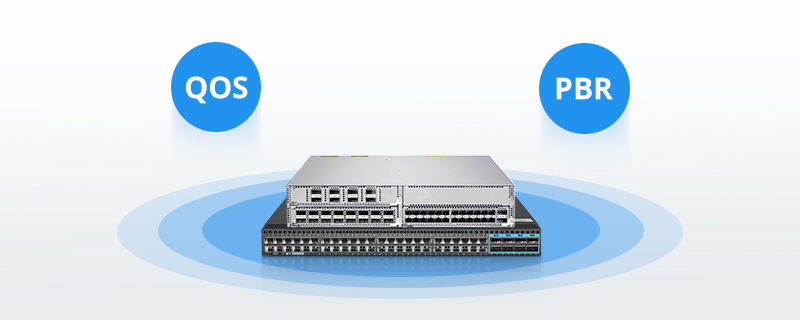In today’s digital era, where data serves as the lifeblood of modern businesses, the concept of Data Center Interconnection (DCI) networks has become increasingly pivotal. A DCI network is a sophisticated infrastructure that enables seamless communication and data exchange between geographically dispersed data centers. These networks serve as the backbone of modern digital operations, facilitating the flow of information critical for supporting a myriad of applications and services.
The advent of digital transformation has ushered in an unprecedented era of connectivity and data proliferation. With businesses embracing cloud computing, IoT (Internet of Things), big data analytics, and other emerging technologies, the volume and complexity of data generated and processed have grown exponentially. As a result, the traditional boundaries of data centers have expanded, encompassing a network of facilities spread across diverse geographical locations.
This expansion, coupled with the increasing reliance on data-intensive applications and services, has underscored the need for robust and agile communication infrastructure between data centers. DCI networks have emerged as the solution to address these evolving demands, providing organizations with the means to interconnect their data centers efficiently and securely.

Understanding Network Deployment Requirements and Goals
In the realm of modern business operations, analyzing the communication requirements between data centers is a crucial first step in deploying a Data Center Interconnection (DCI) network. Each organization’s data center interconnection needs may vary depending on factors such as the nature of their operations, geographic spread, and the volume of data being exchanged.
Determining the primary objectives and key performance indicators (KPIs) for the DCI network is paramount. These objectives may include achieving high-speed data transfer rates, ensuring low latency connectivity, or enhancing data security and reliability. By establishing clear goals, organizations can align their DCI deployment strategy with their broader business objectives.
Once the communication requirements and objectives have been identified, organizations can proceed to assess the scale and capacity requirements of their DCI network. This involves estimating the volume of data that needs to be transmitted between data centers and projecting future growth and expansion needs. By considering factors such as data transfer volumes, peak traffic loads, and anticipated growth rates, organizations can determine the bandwidth and capacity requirements of their DCI network.
Ultimately, by conducting a comprehensive analysis of their data center interconnection needs and goals, organizations can lay the foundation for a robust and scalable DCI network that meets their current and future requirements. This proactive approach ensures that the DCI network is designed and implemented with precision, effectively supporting the organization’s digital transformation efforts and enabling seamless communication and data exchange between data centers.

Network Planning and Design
In the realm of Data Center Interconnection (DCI) networks, selecting the appropriate network technologies is paramount to ensure optimal performance and scalability. Various transmission media, such as fiber optic cables and Ethernet, offer distinct advantages and considerations when designing a DCI infrastructure.
Network Topology Design
- Analyzing Data Center Layout and Connectivity Requirements: Before selecting a network topology, it is crucial to analyze the layout and connectivity requirements of the data centers involved. Factors such as the physical proximity of data centers, the number of connections required, and the desired level of redundancy should be taken into account.
- Determining Suitable Network Topologies: Based on the analysis, organizations can choose from a variety of network topologies, including star, ring, and mesh configurations. Each topology has its own strengths and weaknesses, and the selection should be aligned with the organization’s specific needs and objectives.
Bandwidth and Capacity Planning
- Assessing Data Transfer Volumes and Bandwidth Requirements: Organizations must evaluate the expected volume of data to be transmitted between data centers and determine the corresponding bandwidth requirements. This involves analyzing factors such as peak traffic loads, data replication needs, and anticipated growth rates.
- Designing the Network for Future Growth and Expansion: In addition to meeting current bandwidth demands, the DCI network should be designed to accommodate future growth and expansion. Scalability considerations should be factored into the network design to ensure that it can support increasing data volumes and emerging technologies over time.
Routing Strategies and Path Optimization
- Developing Routing Strategies: Routing strategies play a critical role in ensuring efficient communication between data centers. Organizations should develop routing policies that prioritize traffic based on factors such as latency, bandwidth availability, and network congestion levels.
- Optimizing Path Selection: Path optimization techniques, such as traffic engineering and dynamic routing protocols, can be employed to maximize network performance and reliability. By dynamically selecting the most efficient paths for data transmission, organizations can minimize latency and ensure high availability across the DCI network.
In summary, the selection of network technologies for a DCI infrastructure involves a careful analysis of data center layout, connectivity requirements, bandwidth needs, and routing considerations. By leveraging the right mix of transmission media and network topologies, organizations can design a robust and scalable DCI network that meets their current and future interconnection needs.
Want expert guidance on how to configure your network architecture? With leading R&D and global warehouses, FS provides customized solutions and tech support. Act now and take your network to the next level of excellence with FS.
Choosing the Right Optics to Deploy DCI Networks
Deploying a Data Center Interconnection (DCI) network requires meticulous attention to infrastructure development to ensure that the underlying facilities meet the requirements of the network. This section outlines the key steps involved in constructing the necessary infrastructure to support a robust DCI network, including the deployment of fiber optic cables, switches, and other essential hardware components.
Fiber Optic Cable Deployment
- Assessment of Fiber Optic Requirements: Conduct a thorough assessment of the organization’s fiber optic requirements, considering factors such as the distance between data centers, bandwidth needs, and anticipated future growth.
- Selection of Fiber Optic Cable Types: Choose the appropriate types of fiber optic cables based on the specific requirements of the DCI network. Single-mode fiber optic cables are typically preferred for long-distance connections, while multi-mode cables may be suitable for shorter distances.
- Installation and Deployment: Deploy fiber optic cables between data centers, ensuring proper installation and termination to minimize signal loss and ensure reliable connectivity. Adhere to industry best practices and standards for cable routing, protection, and labeling.
Switch Deployment
- Evaluation of Switching Requirements: Assess the switching requirements of the DCI network, considering factors such as port density, throughput, and support for advanced features such as Quality of Service (QoS) and traffic prioritization.
- Selection of Switch Models: Choose switches that are specifically designed for DCI applications, with features optimized for high-performance data transmission and low latency. Consider factors such as port speed, scalability, and support for industry-standard protocols.
- Installation and Configuration: Install and configure switches at each data center location, ensuring proper connectivity and integration with existing network infrastructure. Implement redundancy and failover mechanisms to enhance network resilience and reliability.

Other Essential Hardware Components
- Power and Cooling Infrastructure: Ensure that data center facilities are equipped with adequate power and cooling infrastructure to support the operation of network hardware. Implement redundant power supplies and cooling systems to minimize the risk of downtime due to infrastructure failures.
- Racks and Enclosures: Install racks and enclosures to house network equipment and ensure proper organization and management of hardware components. Consider factors such as rack space availability, cable management, and airflow optimization.
By focusing on infrastructure development, organizations can lay the foundation for a robust and reliable DCI network that meets the demands of modern data center interconnection requirements. Through careful planning, deployment, and management of fiber optic cables, switches, and other essential hardware components, organizations can ensure the seamless operation and scalability of their DCI infrastructure.
Conclusion
In summary, the deployment of Data Center Interconnection (DCI) networks yields significant benefits for organizations, including enhanced data accessibility, improved business continuity, scalability, cost efficiency, and flexibility. To capitalize on these advantages, organizations are encouraged to evaluate their infrastructure needs, invest in DCI solutions, embrace innovation, and collaborate with industry peers. By adopting DCI technology, organizations can position themselves for success in an increasingly digital world, driving growth, efficiency, and resilience in their operations.
Fiber optic DCI networks provide high bandwidth, fast scalability, and cost saving solutions for multi-site data center environments. FS has a team of technical solution architects who can help evaluate your needs and design a suitable system for you. Please contact our expert team to continue the conversation.
